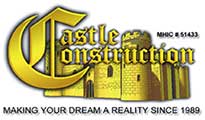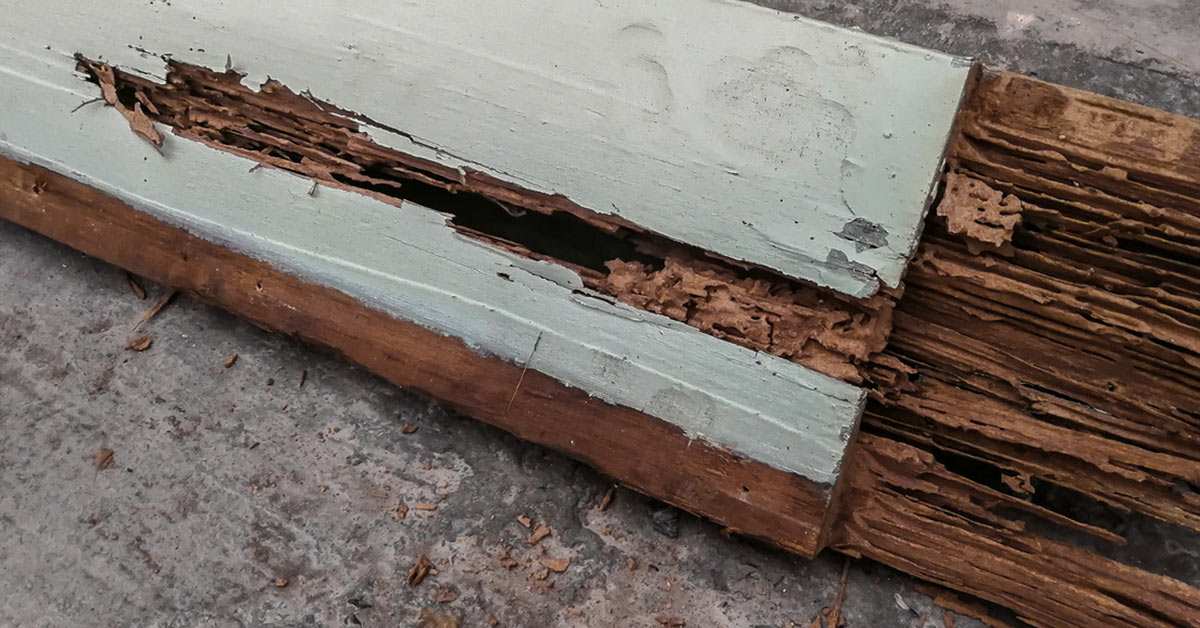Pictures of termite damage reveal hollowed-out wood and structural weakening. These images highlight the extent of destruction these pests can cause.
The implications of termite damage are essential for homeowners and potential buyers alike. Termites are notorious for causing extensive and expensive damage to properties, often silently and without immediate detection. Recognizing the signs of an infestation, such as damaged wood, mud tubes, and discarded wings, can prompt timely intervention and potentially save substantial repair costs. It is crucial to inspect homes regularly for termite damage, as this can prevent minor issues from escalating into major structural problems. Inspections can also identify the need for professional pest control services to eliminate and prevent termite infestations effectively.
The Hidden Menace Of Termite Infestations
Termites often stay unseen as they destroy homes. Winged or swarming termites slip through tiny cracks. Wood in contact with soil invites them. To pinpoint these pests, look for mud tubes, wood damage, and Fras. These are clear evidence of termite presence. Regular checks by professionals can prevent serious damage.
Visual Evidence: The Severity Of Termite Damage
The severity of termite destruction is vital for homeowners. Comparing untouched structures to those ravaged by termites reveals dramatic differences. Strong, solid wood turns weak and crumbling. The integrity of the material is compromised, posing serious threats to the safety of any building.
Detailed photographs showcase the alarming contrast. Pristine beams and panels stand in stark contrast to their damaged counterparts. These images capture wooden surfaces before the termites strike and after they have left a trail of destruction. Timber riddled with holes and grooves tells a cautionary tale of neglecting pest control. Close-up pictures are even more revealing. They show intricate patterns etched into the wood by termite mandibles. The finesse of the damage belies its destructive nature, demonstrating termites’ ability to silently compromise a structure’s most critical elements.
Structural Havoc: When Termites Attack
Undetected termite damage can lead to compromised house foundations. Houses with weak foundations may start to sink or become unstable. This risk increases over time, creating dangerous living conditions. It’s crucial to identify and address any termite activity early on.
The impact of termites on historic buildings is devastating. These structures often feature irreplaceable woodwork and architecture. When termites invade, they silently gnaw through wood, leaving behind a fragile shell. The loss of structural integrity can lead to sudden collapses, erasing pieces of our shared cultural heritage.
Financial Falls: The Costly Effect Of Termites
Termite damage can severely impact your finances. Homeowners often face hefty repair bills due to termite destruction. It’s crucial to recognize the signs early. Ignoring the warning signs can lead to escalating costs. Estimating repair expenses is not straightforward. Costs can vary significantly, depending on damage severity and home size. Specialists may quote thousands of dollars for repairs.
Termite damage is often not covered by standard insurance policies. This lack of coverage can lead to unexpected out-of-pocket expenses. Always review your policy or contact your insurer to understand what is included.
Ecological Insights: Termite Damage Beyond Human Property
Termite damage isn’t limited to human homes. Forests suffer as these insects eat trees and plants. This weakens the woodland areas, making them more vulnerable to other threats. Termite activity can change forest conditions significantly, affecting the habitat of other species. Their appetite for wood alters forest structure and diversity.
In agricultural lands, crop yields drop sharply when termites invade. They feed on crops, like corn and sugarcane, causing farmers to lose income. Controlling termites is crucial to protect these resources.
Innovative Solutions: Combating Termite Destruction
Termites can silently destroy a home or business, leaving behind extensive and costly damage. Traditional pest control chemicals play a vital role in the battle against these destructive pests. By creating a toxic barrier, such chemicals prevent termite colonies from establishing in or around a structure.
On the other hand, biological termite management utilizes natural predators to keep termite populations in check. This eco-friendly approach employs the use of beneficial nematodes and fungi, which attack and exterminate termites effectively without harming the environment. Both strategies offer innovative solutions to combat termite destruction, safeguarding structures for the long term.
Preventive Measures: Protecting Against Future Infestations
Building structures to fend off termites is essential. Use materials that termites dislike. For example, concrete foundations and steel framing deter these pests. Termite shields help too.
Termite inspections matter for all homes. A yearly inspection finds problems early. Professionals know what to look for. It saves homes from damage.
Why Castle Constructions best for Termite Damage Repair
Castle constructions, often associated with medieval fortifications, prove effective for termite damage repair due to their resilient materials and strategic design. The use of stone, brick, and mortar in castle construction makes these structures less susceptible to termite infestations compared to traditional wooden constructions. The dense and solid nature of these materials provides a formidable barrier against termite intrusion, minimizing the risk of further damage. Additionally, the thick walls and robust foundations characteristic of castles offer durability and longevity, reducing the need for frequent repairs. Choosing castle-like construction methods proves to be a wise and sustainable solution for mitigating termite-related concerns in building structures.
FAQ On Pictures Of Termite Damage
What Does The Start Of Termite Damage Look Like?
Early termite damage might appear as hollowed-out wood, maze-like patterns in furniture, walls, or floorboards, and pinpoint holes in drywall. Tiny piles of termite droppings, often resembling sawdust, are another indicator.
How Can You Tell The Difference Between Wood Rot And Termite Damage?
To differentiate between wood rot and termite damage, observe the wood’s condition. Wood rot appears more like decayed or crumbly wood, while termite damage features hollowed-out wood with visible tunnels or mud tubes.
What Do Common House Termites Look Like?
Common house termites typically have a pale brown to white appearance, are about 1/4 to 1/2 inch long, and possess a soft, elongated body. They feature straight, beaded antennae and, if winged, have two equally sized pairs of wings.
What Does Termite Damage Look Like On Outside Of House?
Termite damage on the outside of a house often appears as discolored or drooping drywall, peeling paint, wood that sounds hollow when tapped, and visible mazes within walls or furniture.
What Are Signs Of Termite Damage?
Identifiable signs of termite damage include visible tunnels in wood, hollowed wood, and frass, which is termite excrement.
Conclusion
Termites can wreak silent havoc on a home, often unnoticed until too late. These images of termite destruction reveal the intense repairs needed post-infestation. Keep an eye out for early signs and act swiftly to protect your property. prompt treatment can save tremendous costs and preserve your home’s integrity.


